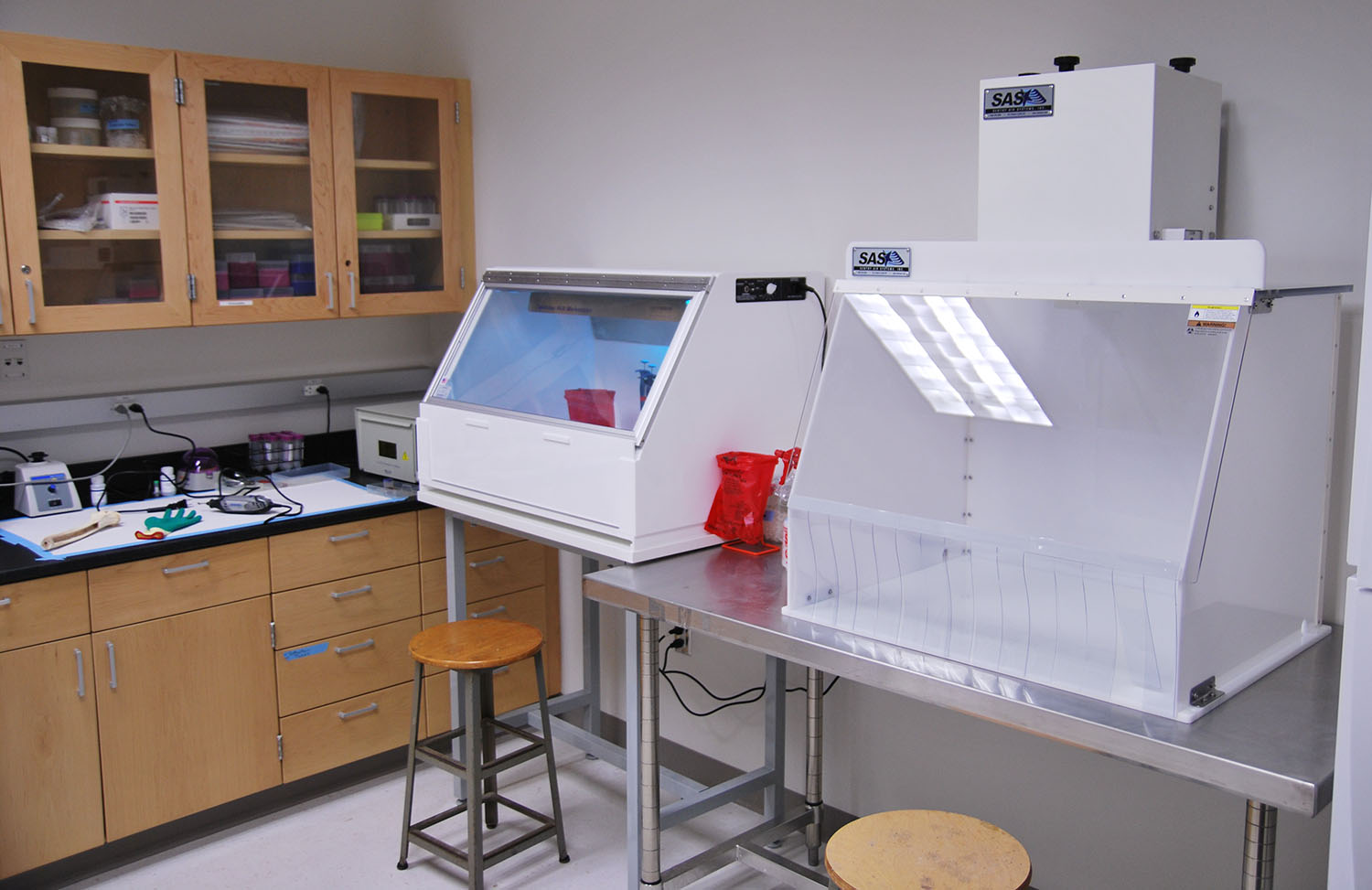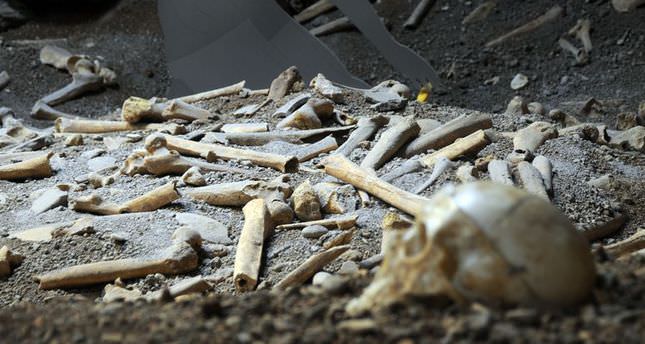
Traditional DNA specimens gathered at crime and trauma scenes include hair, blood, saliva, and other bodily fluids. In most cases these are excellent sources for identifying human remains.
Unfortunately, if a body is severely decomposed, exposed to extreme environmental conditions, or only skeletal remains are found, it makes recovering DNA that much more difficult. In these extreme cases, forensic scientists are turning to bones.
In an August 2004 article in the Journal of Forensic Sciences entitled “A Simple and Efficient Method for Extraction DNA from Old and Burned Bone”, the authors noted that “compared with the DNA in soft tissue samples, DNA in bone samples is more resistant to the environment’s chemical and physical erosion because of the protection afforded to it by the bone itself.”
University trains students in the art of DNA extraction
 Students in the Forensic Science Department at Sam Houston State University (SHSU) are learning how to extract DNA from bone specimens gathered from the University’s body farm.
Students in the Forensic Science Department at Sam Houston State University (SHSU) are learning how to extract DNA from bone specimens gathered from the University’s body farm.
Dr. Sheree Hughes-Stamm, Clinical Assistant Professor of Forensic Science at SHSU, explains the types of DNA one can extract from bone.
“You will be able to extract both nuclear and mitochondrial DNA from bone. However, sometimes the nuclear DNA is too degraded, and/or is in too small amounts to be useful. Therefore mitochondrial DNA is generally used as a last resort for identification.”
In preparation for DNA extraction, students clean the bones with ethanol and bleach. Samples are then ground and cut into powder form. This process creates respiratory hazards for faculty and students and proper engineering safety controls should be implemented to avoid breathing chemical vapors and biological particulate.
The following tables outline both permissible and recommended exposure limits to these hazards as well as known side effects.
| Ethyl Alcohol (Ethanol) | |
| Exposure Limits | Symptoms |
| NIOSH REL 1,000 PPM TWA OSHA PEL |
· Irritation to eyes, skin, nose · Headache · Drowsiness · Exhaustion · Narcosis · Cough · Liver damage · Anemia |
| Sodium Hypochlorite (Liquid Bleach) | |
| Exposure Limits | Symptoms |
| NIOSH REL 0.5 PPM STEL (as Chlorine) OSHA PEL |
· Irritation to eyes, skin, nose · Headache · Drowsiness · Exhaustion · Narcosis · Cough · Liver damage · Anemia |
Ductless Containment Hood for Dust and Vapor Control
Sentry Air Systems (SAS) designs and manufactures a line of Ductless Containment Hoods that help control dust and vapor-laden air through the use of high quality filter media.
Contaminants generated within the hood’s work area are pulled via high powered fan through a series of filters before cleansed air is recirculated back into the room. This process of filtering and recycling the air saves both money and space as dedicated ductwork is not required.
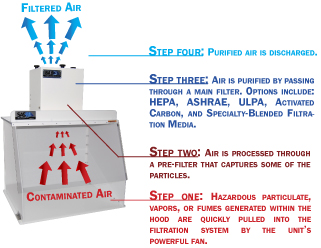
Sentry Air at SHSU
As an alumnus of SHSU, Sentry Air Systems Sales Manager, Omar Ilsever, made an in-kind donation to the Forensic Science Department; which included one of our Model 330 Ductless Containment Hoods [SS-330-DCH].
The hood came equipped with HEPA and Carbon filtration to aide in the capture of both bone particulate and chemical vapor.
Now, students and faculty are able to conduct DNA extraction of bone samples within a confined space. This not only helps in reducing cross contamination in the lab, it also helps in protecting their breathing zone from respiratory hazards.
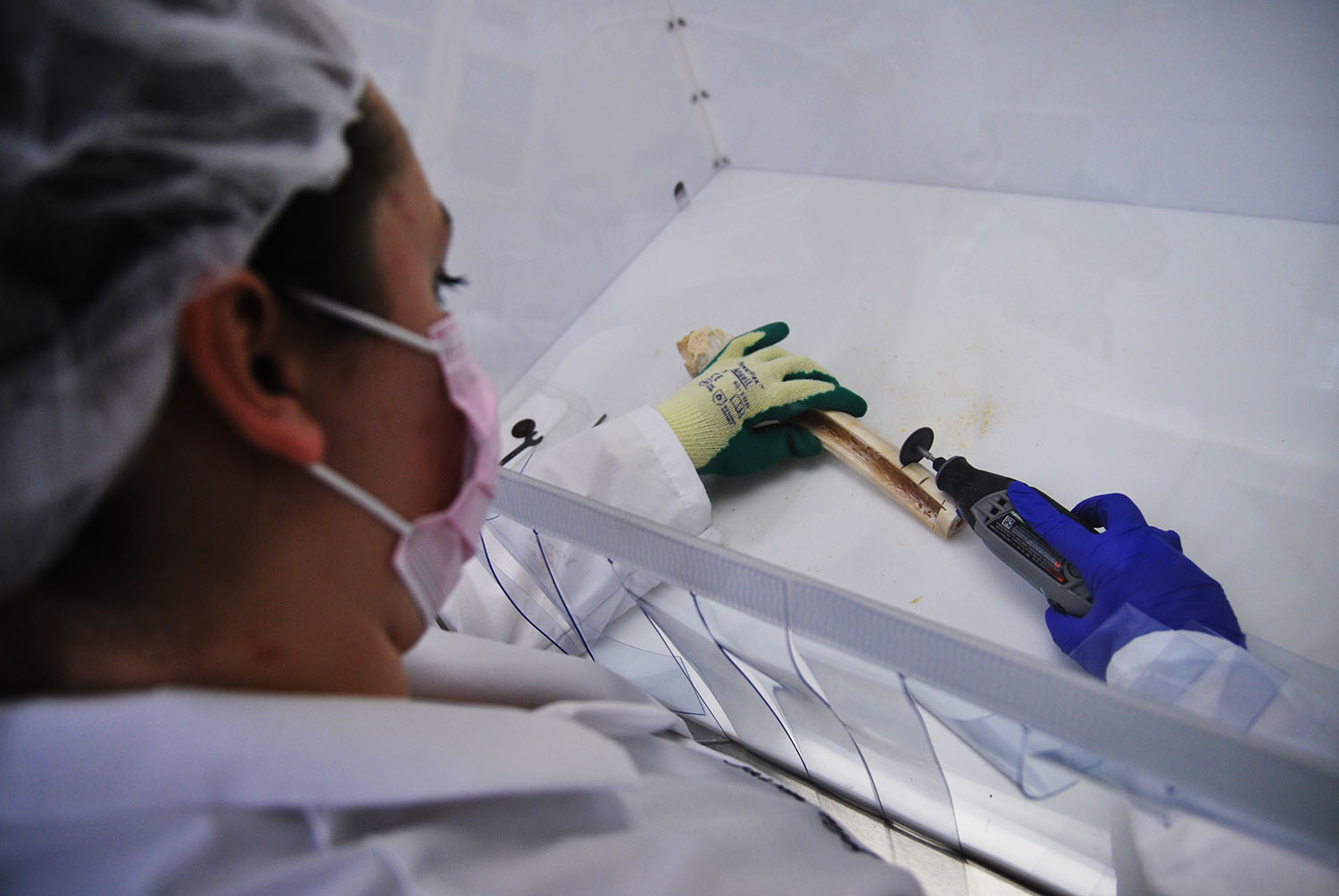
As shown above, SHSU Masters student Michelle Harrel grinds a sample of bone inside the 30” wide Ductless Containment Hood. Vinyl strip curtains attach along the access area of the hood to increase dust containment.
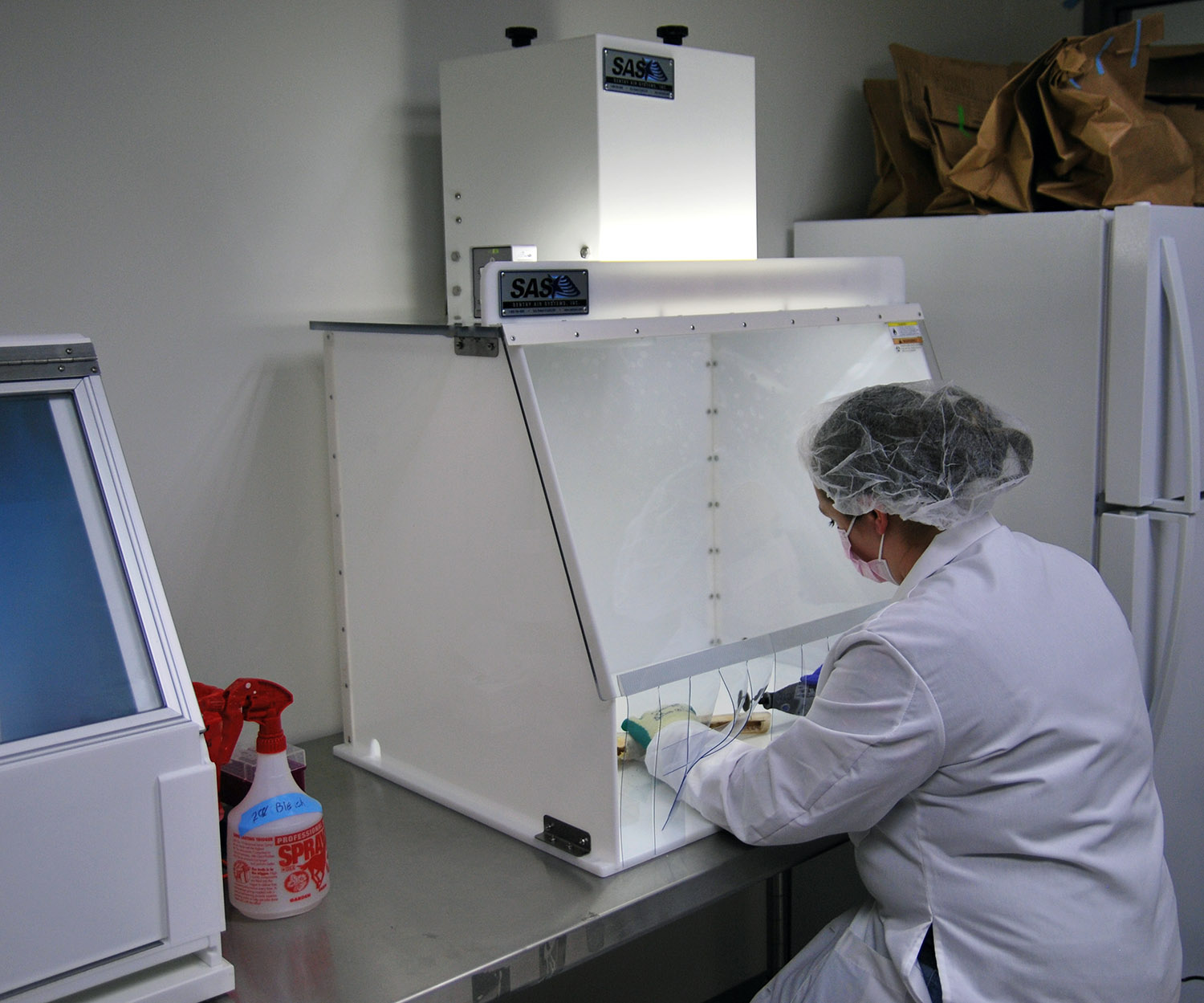
Another angle of the lab shows the fan/filter unit affixed to the top of the hood. Additionally, a fluorescent light is attached for greater visibility within the hood.
Sentry Air Systems is proud to have supplied our Ductless Containment Hoods to laboratories, government agencies, police stations, and universities across North America. It is our continued mission to provide simple solutions for cleaner air and to educate others on the many respiratory hazards found in the workplace.
Contact Us
For more information about chemical vapor and particulate control in a lab setting, contact Sentry Air Systems at 800.799.4609, email sales@sentryair.com, visit our website or fill out the feedback form below.
Resources
- SHSU Department of Forensic Science http://forensics.shsu.edu/
- Study To Develop New Forensic Methods For Human DNA Cases http://www.shsu.edu/today@sam/T@S/article/2016/hughes-stamm-nij
- A simple and efficient method for extracting DNA from old and burned bone http://www.ncbi.nlm.nih.gov/pubmed/15317190

 Made in the USA
Made in the USA
